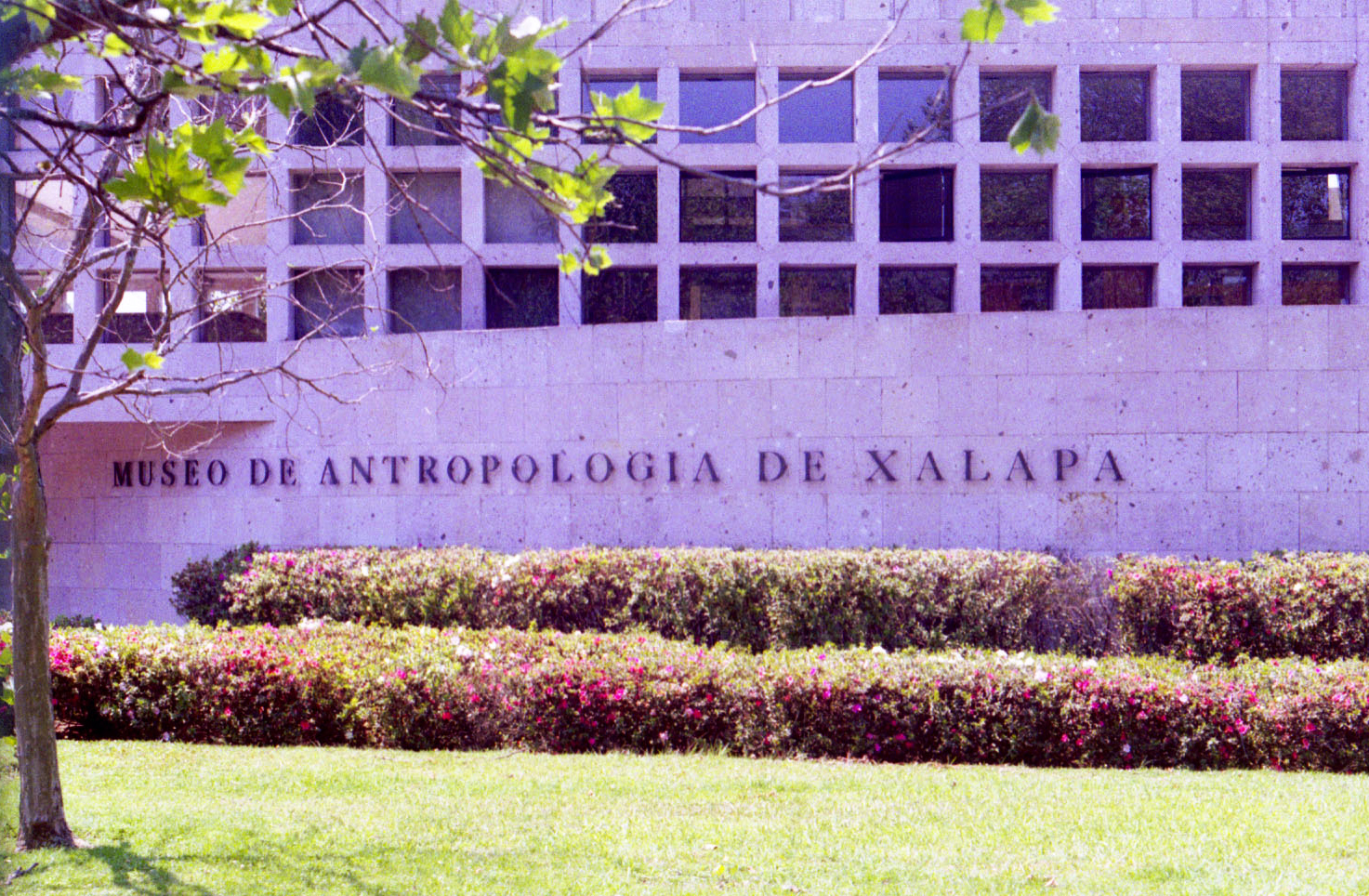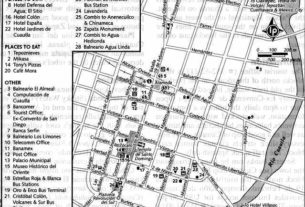Arts of Mexico
Mexico is a country rich in creative expression, and its creative roots go far back into the history of its people. In much of the modern work done today, one can still catch a glimpse of the mysterious energy that permeated all pre-Columbian work. In the state of Veracruz, the Xalapa Anthropological Museum houses a vast collection of these early works.
I visited Xalapa recently and was excited about the prospect of finally being able to look at these pre-Hispanic pieces in their three dimensional reality. I had hoped to bring back a catalogue to re-establish contact with what I had witnessed, as museums often overload the senses, and it is during a quiet moment alone that one can slowly savor what was missed.
I was disappointed to discovered that this most exceptional display of early work was not really available to anyone off the museum grounds. You weren´t allowed to photograph any of the work nor was there even a book to take home to savor the trip. The gift shop is filled with trinkets and touristy craftwork from other areas of Mexico.
I spoke to the director of the museum, Dr. Ruben B. Morante Lopez, about the possibility of taking a few photographs as there wasn´t even a postcard available. He shrugged his shoulders and said it wasn´t possible. Maybe if I could prove I´m not doing this for gain and wrote him a letter , the Board of Directors might grant me a permit for $1,000 pesos, but it wasn´t a sure thing.
He then showed me a beautifully reproduced catalogue that he had done a year before to be sold in the museum gift shop. The photographs were breathtaking and showed the power, subtle refinement, and sensibility of the pieces. It was the first time I had seen the true richness of the work available in the museum.
I told him I´d like to buy a copy of the catalogue and he told me that it was impossible. “Nine hundred copies were to be published,” he said, “500 in Spanish and the other 400 in English and French. The first 500 arrived at the museum and mysteriously disappeared. The other 400 copies were never done.”
The only book available on the work housed in this museum is a book called “Fragments”. It is the only book approved by the Board of Directors for sale. And as the title suggests, the book is a series of meaningless sections blown up out of recognition. What a sad homage to such timeless treasures.
Unfortunately, I can´t show you the incredible beauty of the pieces housed in the museum. I can only tell you and hope that one day you will be able to visit Xalapa yourself and experience this extraordinary collection situated in this lovely and vibrant city.

The museum is organized both in time and position into 3 distinct sections representing the three early cultures of Veracruz – Olmec (the oldest) from the south, Totonaca from central Veracruz, and Huasteca from the north. The Olmec period is known as the pre-classical period, central Veracruz, as the classical period, and Huasteca as post-classical.
The first piece you see in the vestibule when you enter the museum is one of the beautiful colossal Olmec heads. I´ve seen many photos of these famous heads, but to appreciate their size and the majesty of these monumental stone pieces, you have to witness them. It´s mind-boggling that in anything so large, so much of what it means to be human with all its complexities could be expressed. There are more heads inside the museum – seven to be exact – and each deserves its own bit of time for contemplation. These heads are believed to be of dead chieftains, with the largest being 9 feet high and weighing 7 tons. Each head is different and expresses in its subtle carving, a different personality with all its complexities.
The Xalapa Museum houses the best collection of Olmec heads in the country. It even has the only smiling head known to exist. Each head, as different as it is, has exceptional aesthetic worth. They may go back a good 3,000 years, but what they reflect of man´s nature is eternal.
Among the monumental basalt thrones and beautifully carved altars, some of which were held up by marvelously sculpted statues, were figures in transformation from human to animal form. A number of pieces were half human, half jaguar. The Olmecs were the first people in Mesoamerica known to enter shamanic states where they were able to transform themselves into real and imaginary animals.
In the museum, I discovered stone sculptures in the shape of eggs with dream-like faces carved into them. It is believed that the work refers to the ancient myth of origin where the world was born from an egg. For me, the pieces brought to mind the surreal dream-like figures seen in many of the modern Mexican paintings being done today.
The later Olmec period, which was over by 300 AD, contained work as modern and sophisticated as anything done today: – humans and animals in combined materials in perfect proportion and animation, naked individuals in feline positions, and naked babies with different facial expressions and attitudes. I was particularly taken by a funeral urn painted in black and cream with a mustached head carved above, and all of it beautifully finished.
A masterpiece was a sculpture known as the “Lord of Limas”, the name of the town in which it was found. It is not a large piece but extremely expressive. It´s an adult figure holding a lifeless child. The flaccid, stone child has the weight of a body that is profoundly asleep or dead. I have seen this famous statue in many photographs, its power can only be appreciated when standing in the presence of it.
I moved from this section into the room devoted to central Veracruz. Here, I encountered magnificent ceramics and exquisitely carved life-size statues of women. These artists were prolific, with a wide variety of fine work too numerous to mention. There was even a section devoted to the artistic expression of music, dance, and games. Some of the pieces were cast from molds, and it is the first time I have ever seen statues with moveable limbs.
The “Cautivo” or The Captive, a life-size delicate, hollow figure with a cord around the neck, probably best represents the fine detailed work of these people. Every detail of the body is defined, right down to the toenails. Many of the figures of this period are so life-like that the feel is of living flesh with all its changes in quality from use to abuse. It is sometimes more than you´d like to know – brutal with honesty.
Much of the ceramic work is large with animal and human figures. Among the more notable works is ¨ Senor de la Muerte¨or Lord of Death – a grotesque reminder of where we are all heading, very powerfully portrayed. Some of the work incorporates the early belief in the duality of things.
I particularly liked ” Tipe-Toltec” or The Flayed One. This piece represents the god of nature in renewal upon the arrival of the first rain of the year. It is also a piece I had seen in photographs but could never have imagined the reaction I would have to seeing the life-size figure. When I had seen the photograph, I had an intellectual appreciation. Now, I felt a visceral connection.
The last and most recent of the three groups was the Huastecas with their rich work carved in sandstone and their temple murals in black, ocher, brown, red and white and decorated with sculptures of humans, birds, and serpents. Their sculpture is tall and lean, many of which are cone shaped and incised. The jewelry is done in conch and other shells and is finely executed.
The myth of the rabbit in the moon, which is still well-known today, goes back to this period and is seen in the sculpted work. In the beginning the gods made two moons. One was too bright so a rabbit was thrown into its face to darken it’s light. The Mexicans say if you look into the moon today, you can still see the rabbit, just as the ancients did.
My hours spent in this extremely well laid-out museum was a wonderful walk back in time. Not only was the work exceptional and a pleasure to see, but the glimpse I was able to have into the particular world vision of the creators of this work was a privilege and a unique experience. It´s unfortunate that the powers that be will not permit more to enjoy these pieces through a good catalogue, but even if they don´t, nothing compares to the physical presence and contemplation of those figures.
Should you get a chance to visit Xalapa, the museum is a must.


